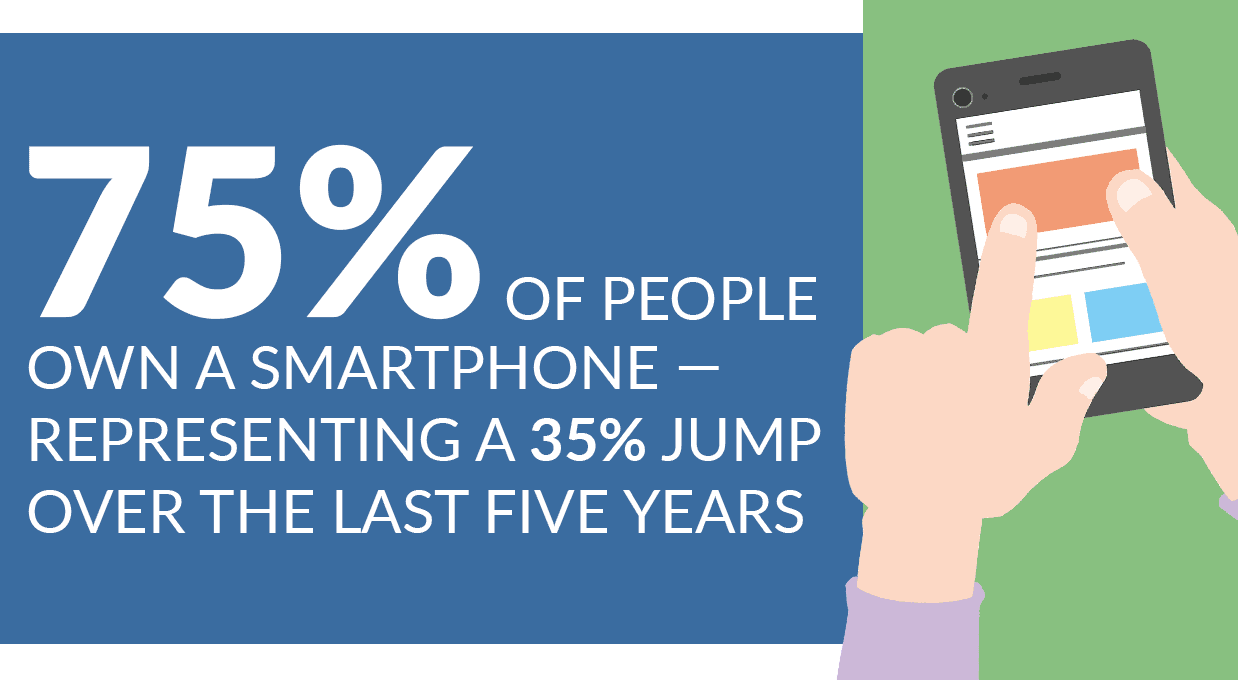Your healthcare practice website is the mothership of your entire digital footprint. It’s a dynamic, evolving, interactive experience. Your website is the first impression patients have of you when impressions matter the most, and attention spans are non-existent. Is it helping build your healthcare practice or scaring patients away? We have highlighted 8 healthcare website best practices to help you win more credibility with your patients.

Photo by 200degrees on Pixabay
If you’re concerned about your presence online, including whether your profiles are correct on different review sites or if your office hours are properly listed on Yelp or Healthgrades, it all begins and ends with your website.
Your website is where:
- Search engines look to update your practice information
- Your profiles get synchronized online on 3rd party sites
- You give a boost to all your ad campaigns
- Potential patients will go to find you
- Patients go to schedule appointments or obtain more information before making a purchase decision.
- You build authority and credibility within your community
And unfortunately, your website isn’t something you can build and walk away from — not if you want to keep up with the competition and not if you care about your digital footprint. It is a living, breathing organism that needs to adapt and be nurtured every single day.
Below we’ll break down eight ways your website may be harming your practice and what you can do to turn it around.
1. Not Mobile-Friendly
If your practice website isn’t designed with mobile users in mind, you’re putting yourself behind the eight balls right out of the gate in more ways than one.
Most importantly, Google now penalizes websites that are not mobile-friendly. If your website doesn’t look good on a phone, tablet, or smaller screen), those websites that are may leapfrog you in search results on mobile devices.
It’s something we’ve been stressing time and again with our clients, and Google has finally validated it. In Google’s words:
“To recap, our crawling, indexing, and ranking systems have typically used the desktop version of a page’s content, which may cause issues for mobile searchers when that version is vastly different from the mobile version. Mobile-first indexing means that we’ll use the mobile version of the page for indexing and ranking, to better help our – primarily mobile – users find what they’re looking for.”

More than 75% of people own a smartphone — representing a 35% jump over the last five years, and 57% of web traffic now comes from smartphones and tablets. If those users have problems accessing and navigating your site, you can be sure they’ll move on to the next site in the search rankings, one that won’t cause them frustration.
To stay competitive in today’s mobile-ready world, your website and appointment request forms must be ready whenever, however, and wherever your potential patients are. Building a mobile-responsive website means your site will adapt its size and layout and automatically reformat its viewing quality based on the size of the screen it’s being viewed on.
Having your website readily adaptable to mobile users sends a subtle but powerful message to current and potential patients that you have taken the time and effort to understand their needs, connect with them in the way they want to be connected with, and deliver the type of online service they expect.
Sally, the mother of three with a sick daughter, requires your care. However, while standing in line at Costco, she needs access to your most pertinent practice information right away. It’s the same thing when she’s in between dinner and football practice.
2. No Blog (Say It Ain’t So!)
Most of your website traffic comes through your homepage or the ‘front door’ to your practice online. However, you also have side doors and backdoors through which visitors can access your site. The most important of these is your blog.

The #1 reason you need a blog is so you show up higher in search rankings; it could be a “News” section or somewhere you post announcements (so don’t get hung up on the term ‘blog’). Although your homepage acts as the main entrance, it’s not something that gets updated regularly. And one of the most important criteria for consistently showing up in organic search rankings is to post new and fresh content because search engines are constantly indexing the content available online.
Your blog is what will take you to the promised land.
 Most of our clients aren’t spending money on Adwords, they’re spending time and money on updating their sites and creating new content, and that’s why they regularly show up higher in search rankings.
Most of our clients aren’t spending money on Adwords, they’re spending time and money on updating their sites and creating new content, and that’s why they regularly show up higher in search rankings.
The next big reason why blogs matter is that visitors to your site are more apt to share a blog post on social media than on a procedure page. You may have a general page on regenerative medicine and stem cell therapy if you’re an orthopedic surgeon. You can easily complement that with a blog post entitled “Ten Ways Regenerative Medicine Is Revolutionizing Major Treatments,” or even better, a patient testimonial entitled “Stem Cell Therapy Helps Patient Overcome Knee Osteoarthritis.”
Those benefit-driven posts will get shared more often than a procedure page, but they will drive more traffic back to that procedural page later.
Research indicates that the medical content trusted most by Internet users is written by physicians (60% of respondents). By posting current news, events, and updates about your subspecialty, you will establish yourself as a trusted source of information and increase website traffic. Your posts will also tend to be shared with your patients’ friends, family, and colleagues on social media—giving you additional free publicity.
3. Slow Loading Times
“2 seconds is the threshold for e-commerce website acceptability. At Google, we aim for under a half second.” – Google
The speed at which your site loads is critical for your online success. Almost 60% of Internet users will abandon your website if it takes longer than three seconds to load. It boils down to whether your website doesn’t load quickly, then people will abandon it without ever seeing any of your content.

If a potential patient wants to know more about your colonoscopy service, but your website takes seven to ten seconds before it shows up, they’ve already moved on to the competitor down the Google search rankings. They may be so annoyed with you that they may never give you another chance.
Sometimes uploading speed is related to the type of website hosting service you use. You can find inexpensive website hosting just about anywhere (GoDaddy, Bluehost, and HostGator), and they work fine for some sites. But if you’re going to invest in your website as part of your real strategy, you want to upgrade to something a little more customized.

When you’re potentially sharing a server with thousands of websites, and something happens to that server, you’ll go down with the ship if you reach a content or data threshold, the same holds. And if the service happens to have a slow loading speed, you cannot do much. If you want peace of mind, then you may want to look at stronger hosting.
In our view, it’s worth it to pay a little more to ensure precious web traffic stays on your site. If you’re trying to attract patients to your website but don’t have the goods to back it up, you’re swimming upstream against a flood (and throwing valuable advertising money down the drain).
4. Not Paying Attention to Google Analytics
Not taking advantage of what Google Analytics offers your website is like performing surgery with a blindfold on — your chances of success diminish exponentially. Here why:
Google Analytics breaks down the time visitors spend on your site, when they complete an action (like requesting an appointment) and what percentage of visitors leave the site after just a few seconds. Google Analytics is simple, powerful, and an excellent tool to measure all your digital marketing efforts, track what your audience is doing, and give you the best chance to attract and retain more patients.

If you’re not heeding what the data is telling you and not making changes based on that information, well, you guessed it, one-handed blindfold digital surgery.
Google Analytics is the gold standard to measure website stats. It’s 100% free and easy to install on your site. The program does all the heavy data lifting for you, including:
- How many people visit your site
- What they look at
- The path they took to arrive (from social media, organic search, or paid advertising)
You can also add goals to your AdWords account. This will allow you to see what it costs you to acquire a new patient while tracking results simultaneously.
For example, let’s say you want more rhinoplasty patients in your ear, nose, and throat practice. You set up a goal in Google Analytics that every time someone visits the rhinoplasty page, you register it to complete the goal.
If you set a goal for 250 more people to visit that page per month, you can check Analytics anytime to monitor your progress. If it’s more appointment requests you’re after, every time a visitor gets to the appointment confirmation or thank you page, you can set it up so Analytics will register it as a goal completed. If twenty more appointment requests per month are what you’re shooting for, you have a number to target, a way to measure your progress, and a method to achieve your goal.
5. SEO What?
Search engine optimization (SEO) may seem like a complicated technical term reserved for computer geeks and web hackers for too many doctors and practice managers. But here’s what it really means.
The key is content. And your ultimate goal should be putting out content regularly and then making sure it’s SEO optimized so that people can find you. People who write content to accommodate SEO and keywords do worse on search rankings than those who write compelling and dynamic content and then tweak it for SEO. Get the difference?

The fact is there is no point in having a dynamic and engaging website if patients can’t find you online through search engines like Google or Bing. And great content combined with the right SEO can convert web visitors into valuable patients and give you a leg up on the competition. Here’s something to ponder: when was the last time you browsed the second page of any Google search result?
Exactly.
That’s where search engine optimization, or SEO, comes into play. Certain tricks of the trade can’t be overlooked to ensure the content of your practice website is SEO-friendly — elements such as meta descriptions, keywords, and page titles. There is also what’s known as on-page SEO and off-page SEO.
Before you press the panic button, know this. There are a plethora of things you can do right now, without spending a dime, to enhance your site’s search engine optimization (SEO) and fill empty appointment slots.
However, mastering the core SEO components does require in-depth knowledge on both the front and back end of your site. Going it alone (or relying on your office manager) can be challenging, time-consuming, and end up costing you more than using a professional SEO service.
6. No Phone Calls, Please…!
 Believe it or not, many medical practices still insist that the patient needs to pick up the phone and call to make an appointment. The killer for your website is when you’re unwilling to meet the patient where they want to be met. The reality is that most people under 45 want to do everything online — they DO NOT want to pick up the phone.
Believe it or not, many medical practices still insist that the patient needs to pick up the phone and call to make an appointment. The killer for your website is when you’re unwilling to meet the patient where they want to be met. The reality is that most people under 45 want to do everything online — they DO NOT want to pick up the phone.
By not giving your patients the option to contact you after hours, you don’t satisfy the customer when they need you, and you’re making it inconvenient for your patients when they visit your site. It’s all about convenience, and when you give your patients ways to get in touch with you via email or a contact form on your site, you’re showing them you care.
One critical element we recommend to all our medical practice clients is setting up a button or a clear link on every page of their website where visitors can schedule an appointment or fill out a contact form to request a consultation. We’ve heard too many horror stories of prospective patients giving up in utter frustration because they could not find anywhere on a page to contact the practice.
7. No Social Share Buttons
Not having social share buttons may not kill your website, but it would be a huge missed opportunity. You won’t see social share buttons on most of your competitors’ websites, and if you follow suit, you’ll be wasting the chance to set yourself apart from the pack. Giving current and prospective patients an easy one-click way to share valuable content across their networks is critical in today’s digital landscape.
In fact, visitors to your site will be looking for ways to share what they read with their friends and family, so it’s important to provide them with a frictionless and straightforward way of doing so. Otherwise, you may end up frustrating your site visitors more than anything else.

Using our rhinoplasty example above, a visitor to your site might browse a content page entitled “Rhinoplasty Helps Woman Live and Breathe Easier Again.” She may exclaim to herself, ‘Oh, Isabelle should read this. It’s exactly what she’s been looking for!’ Having a social share button gives the user a fast and easy way to share the content via Facebook, Twitter, Instagram, or any other social platform. Plus, they can “tag” their friend in the post, saying, ‘Hey Isabelle, you’ve got to see this!’
Social share buttons can propel a great piece of content to megastar status. We created an infographic for one orthopedic practice we work with on half marathon training and injury prevention. It’s one of the most visited pages on their website, attracting around 25,000 unique visitors a month. The infographic’s longevity is due in large part to social sharing buttons.
8. You Don’t Have a Clear Website Strategy
We wish it were otherwise, but medical marketing is not like the ‘Field of Dreams.’ You can’t just build a website, and they will come. If you don’t have a clearly defined strategy to manage your entire digital footprint, your beautiful digital ballpark will remain empty.

The most successful and forward-thinking hospitals and practices today spend ample time and money developing and implementing their online marketing strategy built around the mothership of their brands…their website.
Healthcare is a unique industry with constant change, and to thrive in today’s climate, your website needs to be near the top of search results (SEO), it needs to be optimized for uploading time and mobile-friendliness, AND you need engaging and creative content to keep your visitors there once they land. Think of it as the three pillars of the digital medical marketing Coliseum. If even one of those pillars is weak, your whole foundation could come crashing down.










